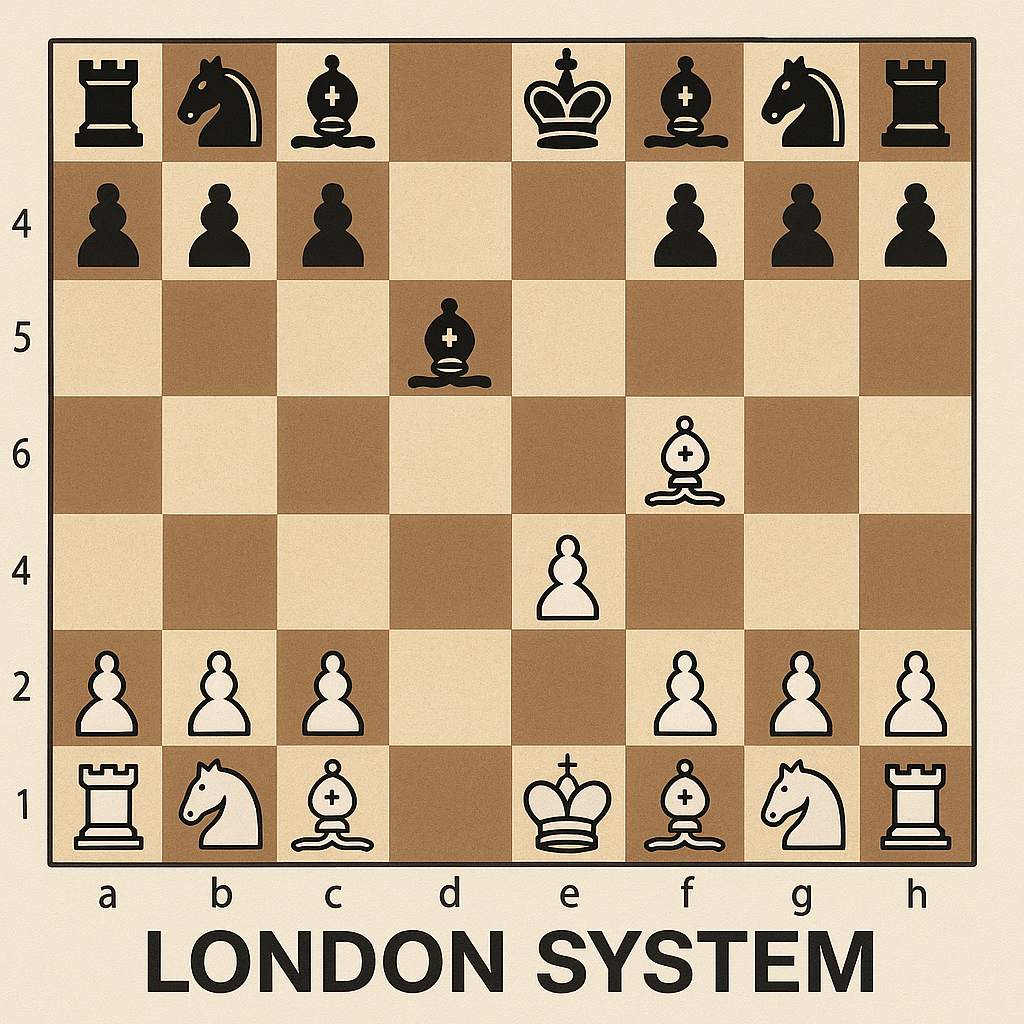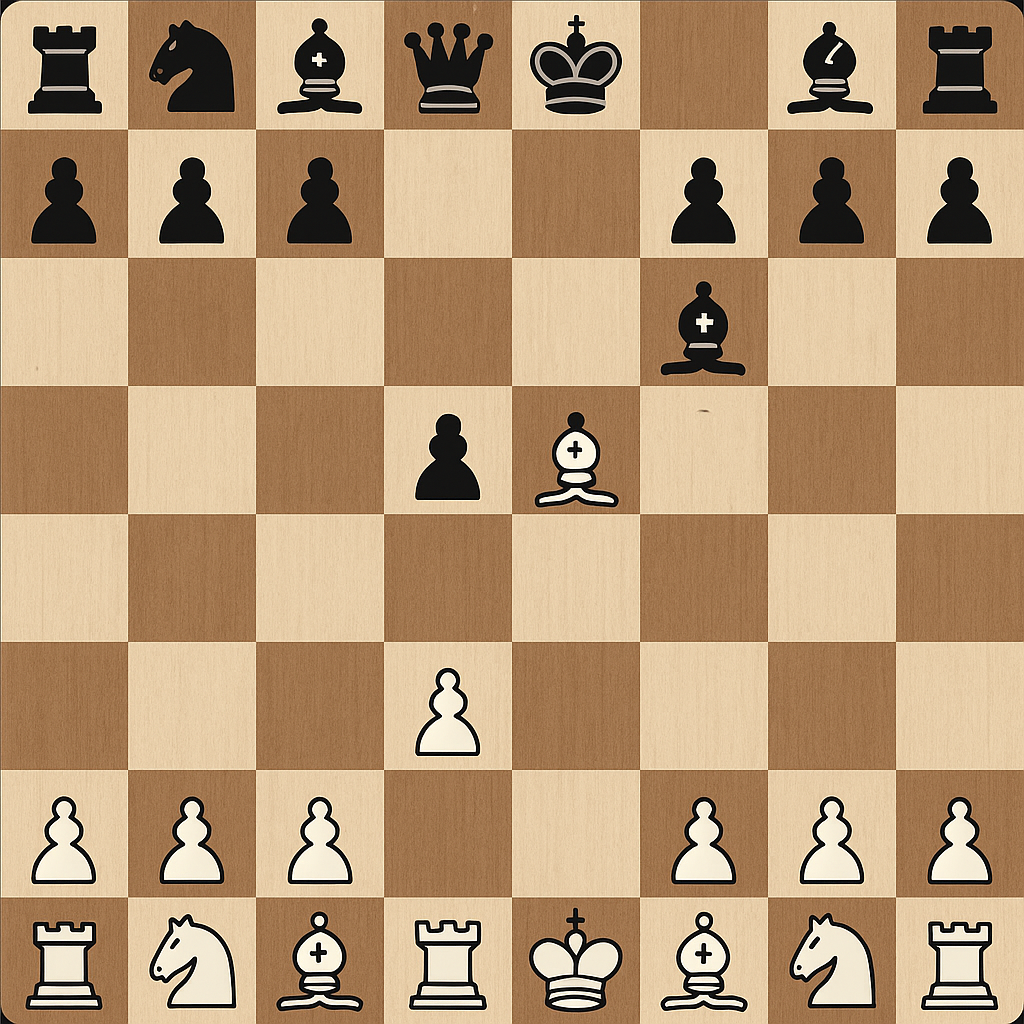Flat 30% OFF Use Code FLAT30
Flat 15% OFF Use Code STORE15
Flat 40% OFF Use Code FLAT40
COD Available
Flat 30% OFF Use Code FLAT30
Flat 15% OFF Use Code STORE15
Flat 40% OFF Use Code FLAT40
COD Available

The London System is a chess opening that has gained considerable popularity among players of all skill levels, from novices to seasoned grandmasters. Its origins can be traced back to the early 20th century, gaining prominence due to its solid and versatile nature. The opening is characterized by a specific pawn structure, primarily defined by the setup of pawns on d4 and e5, alongside well-coordinated piece development. This fundamental pawn structure is not only resilient but also allows for a variety of attacking possibilities and strategic maneuvers.
What makes the London System particularly appealing is its simplicity and ease of learning. Players can quickly familiarize themselves with the essential moves and ideas without delving deeply into extensive opening theory. This accessibility attracts beginners who seek to develop their skills while providing a sturdy foundation for later advancement in their chess journey. At the same time, the richness of opportunities available in this system captivates more experienced players who appreciate the strategic depth it offers.
The London System embodies a flexible playing style that can adapt to various opponent responses, allowing players to transpose into favorable positions. Commonly, the typical setup involves the minor pieces being developed to f3 and d2, alongside the deployment of the light-squared bishop on f4. This configuration not only emphasizes strong control of the center but also targets potential weaknesses in the opponent’s camp. Many players enjoy utilizing this opening due to its solid reputation, making it a reliable choice in tournament situations or casual games alike.
In conclusion, the London System stands out as a highly regarded opening that combines simplicity with strategic depth. Its appealing traits—such as accessibility for beginners, solid pawn structure, and tactical richness—make it an enduring favorite in the chess community.

The London System is a versatile opening characterized by a solid setup that can be employed against a variety of responses from Black. The foundational move involves advancing the pawn to d4, which is typically followed by the development of the dark-squared bishop to f4. The move 1.d4 not only controls the center but also creates opportunities for piece coordination that can lead to favorable middlegame positions.
Following 1.d4, White often plays 2.Nf3 and 3.e3, establishing a robust pawn structure with pawns on d4 and e3. This setup is particularly advantageous as it provides a reliable defense against aggressive counterplay by Black. By positioning the light-squared bishop on f4 early in the game, White can apply pressure on Black’s position while simultaneously preparing to develop other pieces harmoniously. The solid pawn structure embedded in the London System makes it challenging for opponents to launch effective attacks, allowing White to maintain positional control.
Responding to typical moves from Black, such as …d5 or …Nf6, requires adaptability. For example, if Black plays 1…d5, White can reinforce the center with c3, followed by a quick development of pieces. The flexibility of the London System allows players to respond dynamically to varying challenges posed by Black, maintaining the original setup while adapting to the flow of the game.
Overall, the London System exemplifies a strategic approach that favors solid pawn structures and effective piece coordination. By adhering to these basic moves and setups, players can navigate the complexities of the opening and lead themselves into thriving middlegame scenarios rich with potential for both tactical and positional play. This method encourages a deep understanding of piece placement and structure, which are vital for success in chess.
The London System, celebrated for its flexibility, empowers players to execute a variety of strategic themes and plans that can adapt to any opponent’s response. Central to the London System is the establishment of a resilient pawn structure, typically characterized by the pawns on d4 and e4. The early pawn move to c3 serves a dual purpose: it fortifies the center and prepares for future advances, notably e4. This pawn formation not only provides a solid foundation but also plays a crucial role in controlling key squares on the board.
In the middlegame, players employing the London System often aim to advance their pawns effectively. The strategy involves thoughtful calculation regarding pawn breaks and piece positioning. Specifically, maneuvering the knight to f3 and developing the dark-squared bishop to f4 or g5 can yield advantageous piece play and control over the center. These piece arrangements allow players to maintain pressure on their opponent while preparing for potential attacks. Furthermore, establishing a stronghold on the e-file becomes pivotal, providing a line for rooks to penetrate the opponent’s defenses.
The tactical opportunities available in the London System extend into the endgame as well. Players familiar with this system often find themselves better positioned to capitalize on pawn weaknesses or imbalances. However, caution is warranted, as certain pitfalls may arise if a player becomes overly ambitious with pawn advances. Understanding the typical scenarios that emerge from the London opening can aid players in identifying these dangers. By observing common tactics and being aware of the opponent’s counterplay, players can navigate the complexities of the game more effectively. The London System not only thrives on solid strategic planning but also reinforces the importance of adaptability in achieving victory.
The London System has been a favored opening strategy among numerous chess grandmasters and enthusiasts, garnering a reputation for its solid structure and versatility. Notable players such as Viktor Korchnoi, Garry Kasparov, and more recently, Magnus Carlsen, have incorporated the London System into their tournament repertoire, demonstrating its effectiveness at the highest levels of play.
One of the standout games featuring the London System was Korchnoi’s clash against Boris Spassky in the Candidates Tournament in 1977. Korchnoi’s adept use of the wooden chess pieces showcased a well-executed development scheme, where he efficiently built his center and created pressure against his opponent, ultimately securing victory. This game exemplifies how controlling the center and enhancing piece activity play vital roles in this opening, reinforcing its strategic potential.
Another significant encounter is the match between Garry Kasparov and Veselin Topalov in 1999. Kasparov expertly navigated a complex position arising from the London System, showcasing his deep understanding of pawn structures while tactically outmaneuvering Topalov. Through such authoritative performances, players can appreciate how maintaining a strong pawn formation can lead to dynamic play, particularly when employing the London System.
For amateur players aiming to incorporate the London System into their games, there are key takeaways from these famous encounters. Firstly, focusing on solid development and central control is crucial. Utilize your pawns effectively to restrict your opponent’s options while creating avenues for your pieces. Secondly, always be mindful of the tactical possibilities that arise through seemingly ordinary placements, as demonstrated by top players. By studying these legendary games, amateur enthusiasts can glean insights into the intricate strategies within the London System and enhance their own approach to wooden chess.